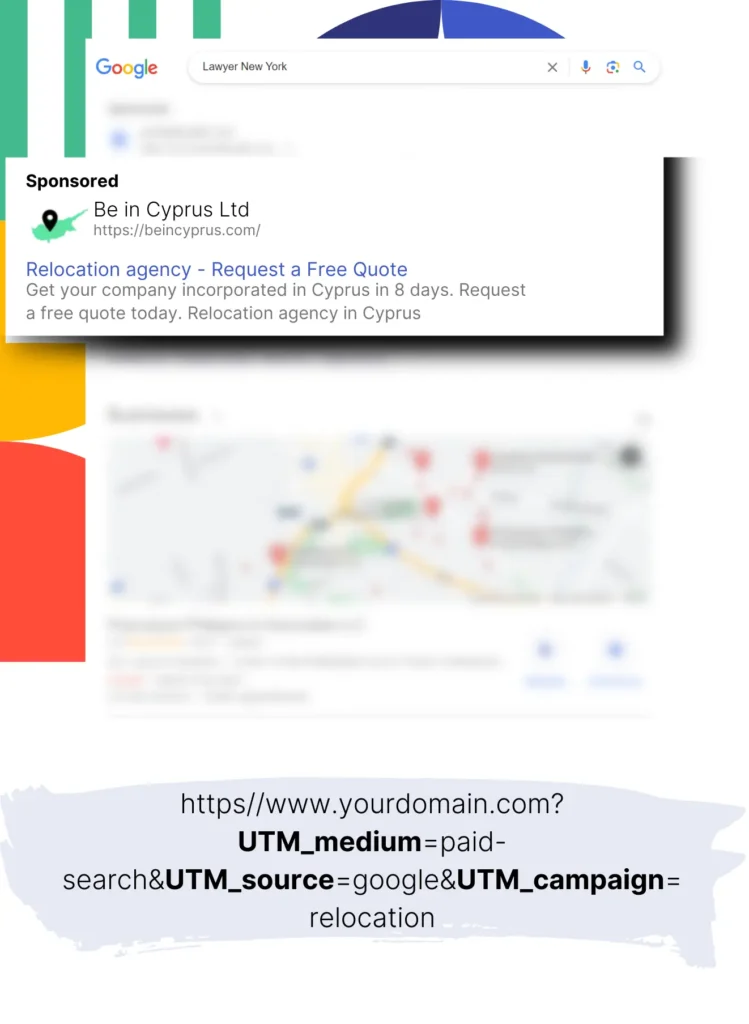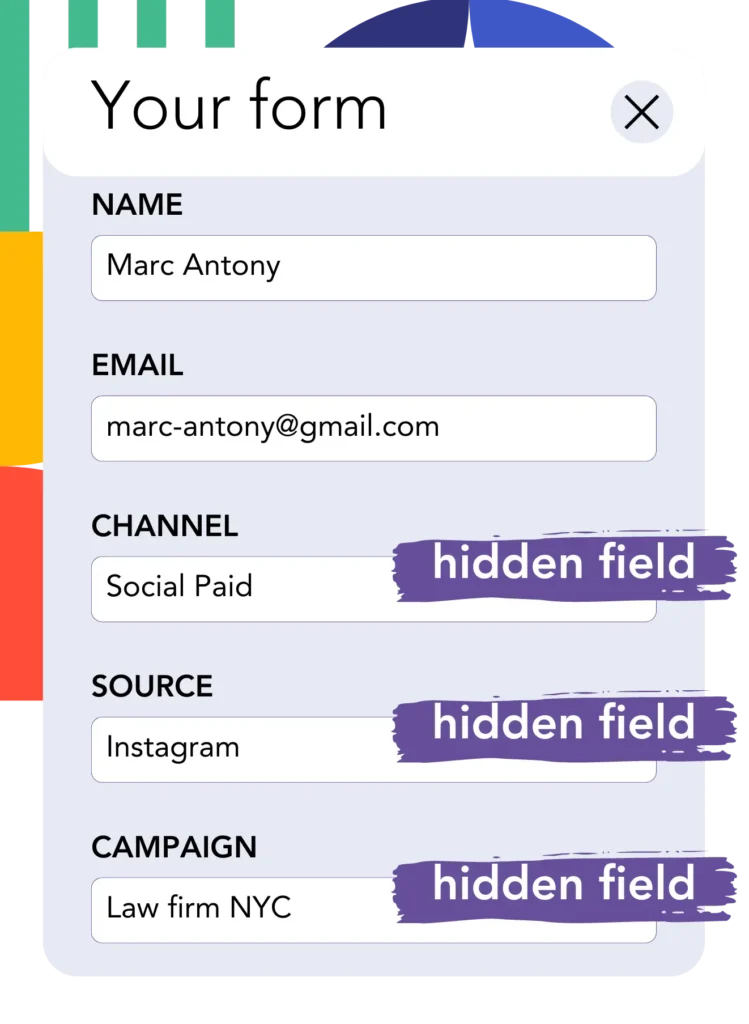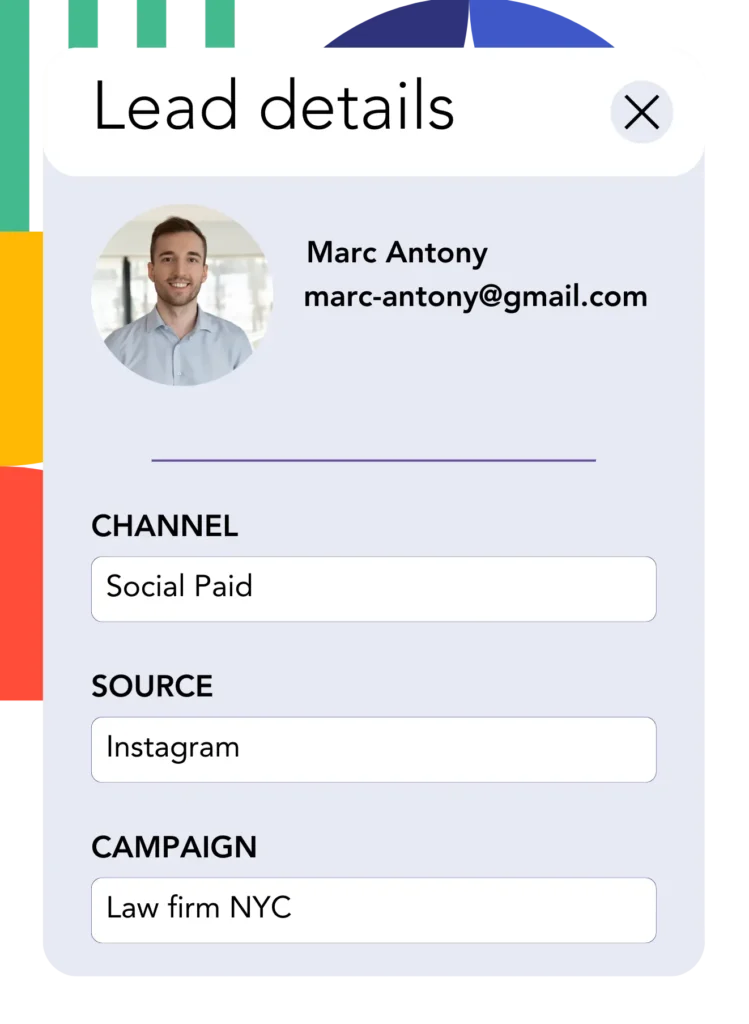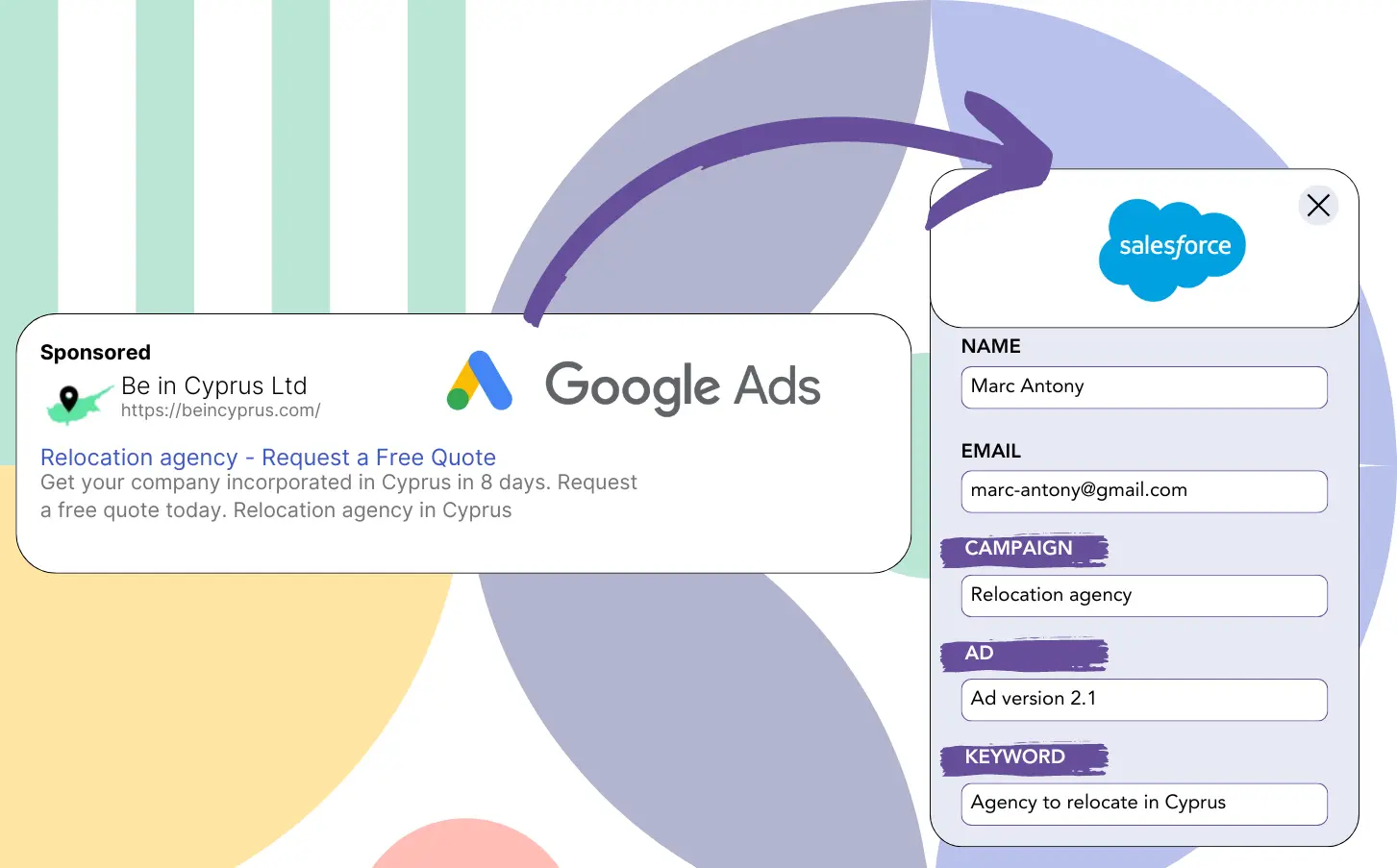Are you using Google Ads to generate leads but unsure which campaigns are driving them?
This is a common issue. Google Ads reveals how many leads a campaign, ad, or keyword has generated, but lacks data on an individual lead level.
Consequently, you can’t determine which campaign, ad, or keyword generated the leads that converted into customers.
Leadsources addresses this issue.
Leadsources allows you to finally track your Google Ads data (campaign, ad, keyword, etc.) on a lead level.
If you send your leads to Salesforce, you can visualize the Google Ads data (campaign, ad, keyword, etc.) for the leads that converted into clients.
You can then generate reports like: Keywords that produced the most clients… and decide which keywords to promote and which to cancel.
Let’s get started!
Capture Google Ads lead data in Salesforce in 4 steps
Step 1: Add Leadsources in the head tag of your website

Sign up to Leadsources.io, and benefit from our 14-day free trial.
Add the Leadsources code to your website’s head tag. No coding experience is needed.
Simply follow this easy step-by-step guide.
Step 2: Add the UTM parameters to your Google Ads campaigns

Add the UTM parameters you wish to track to all your Google Ads campaigns.
Here are some UTM parameters you can include in your ad:
- UTM_source
- UTM_campaign
- UTM_term
- UTM_content
Leadsources also gathers data beyond UTM parameters, including the channel, landing page, and subfolder, giving you a comprehensive view at the lead level.
Step 3: Add the hidden fields to your form

When visitors complete your form (name, email, etc.), Leadsources automatically fills in the hidden fields with Google Ads data (campaign, ad, keyword, landing page, etc.).
To do this, just include hidden fields in your form to capture UTM parameters. We offer step-by-step instructions for all form builders. No coding expertise is needed.
Step 4: Track the Google Ads data in Salesforce

When a visitor clicks your Google Ads ad and arrives at your page, Leadsources collects the Google Ads data (campaign, ad, keyword, landing page, etc.).
Leadsources automatically inserts the Google Ads data into the hidden fields of your form.
When the form is submitted, both the Google Ads data and the form responses can be sent to Salesforce. You’ll need to connect your form to Salesforce for this.
How does Leadsources work?
Inserting the Leadsources code into your website’s head tag will enable it to read and capture Google Ads data (UTM parameters and referrer) each time someone visits your site.
It subsequently saves the Google Ads data in the hidden fields of your form.
If a visitor arrives at your site without UTM parameters in the URL, Leadsources will still gather data about them through the referrer:
- Channel
- Source
- Campaign
- Landing page
- Landing page subfolder
This approach allows you to track crucial lead source details even without UTM parameters, such as:
- On Google Search
- On your Instagram bio link
- On your social media posts
- Etc.
While most tools track lead sources solely via UTM parameters, Leadsources allows you to monitor lead data even for channels without UTM parameters:
- Organic Search
- Paid Search
- Organic Social
- Paid Social
- Referral
- Affiliate
- Display Advertising
- Direct Traffic
This enables you to gather accurate lead source data into a single, central location.
How to run performance reports
Now that your Google Ads data is recorded in Salesforce, you can generate performance reports such as:
- Leads per channel
- Revenue per channel
- Revenue per keyword
- Etc.
This allows you to make informed decisions about your marketing budget.
Let’s dive into the different reports you can generate.
Lead performance reports
You can generate reports that display the number of leads created by:
- Channel
- Source
- Campaign
- Landing page
- Landing page subfolder
Example #1
For campaigns on various channels (SEO, PPC, email, etc.), you can export the data and generate a report titled “Leads by Channel.”

Example #2
Once you identify the channel that generates the most leads (e.g., Google Ads), you can refine your analysis by selecting this channel to see the lead count for each individual ad campaign.

Example #3
After identifying the campaign that generates the most leads, you can dive deeper by analyzing which specific keywords are driving these leads.

Sales performance report
Finding out which ads and keywords generate the most leads is valuable, but do they also contribute to increased revenue?
Sending your form submissions to Salesforce allows you to generate detailed sales performance reports.
Example:
| Channels | Search Paid | Social Paid |
| Leads | 50 | 75 |
| Sales | 5 | 6 |
| Average order value | $150 | $100 |
| Revenue | $750 | $600 |
After advertising on Google and Facebook, you discovered that Social Paid ads produced more leads than Search Paid ads.
After a few weeks, analyzing lead conversion to paying customers reveals that the Search Paid channel generated more revenue with fewer leads compared to the Social Paid channel. This insight helps you decide to increase the budget for Search Paid campaigns.
LeadSources tracks the source of each lead in Salesforce, whether they come from ads, organic search, social, email, etc. and syncs that data with each submission. See the full breakdown on the lead source in Salesforce page.

